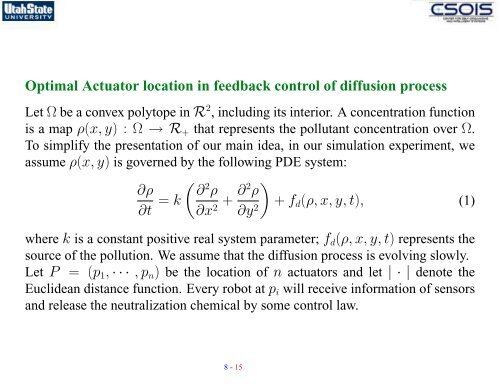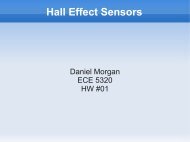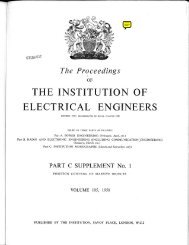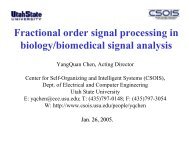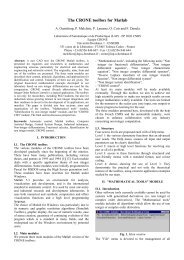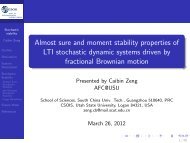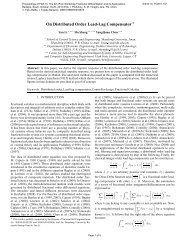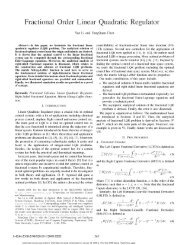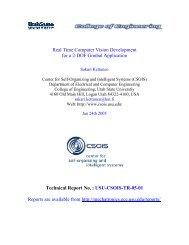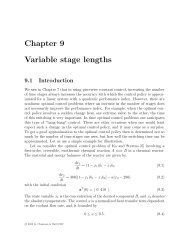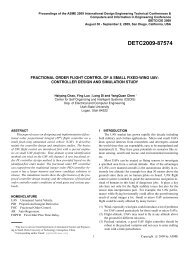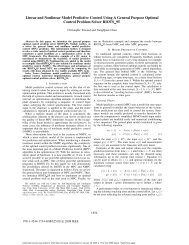Fractional potential field in path planning for mobile robot obstacle ...
Fractional potential field in path planning for mobile robot obstacle ...
Fractional potential field in path planning for mobile robot obstacle ...
Create successful ePaper yourself
Turn your PDF publications into a flip-book with our unique Google optimized e-Paper software.
Optimal Actuator location <strong>in</strong> feedback control of diffusion process<br />
Let Ω be a convex polytope <strong>in</strong> R2 , <strong>in</strong>clud<strong>in</strong>g its <strong>in</strong>terior. A concentration function<br />
is a map ρ(x, y) : Ω → R+ that represents the pollutant concentration over Ω.<br />
To simplify the presentation of our ma<strong>in</strong> idea, <strong>in</strong> our simulation experiment, we<br />
assume ρ(x, y) is governed by the follow<strong>in</strong>g PDE system:<br />
2 ∂ρ ∂ ρ<br />
= k<br />
∂t ∂x2 + ∂2ρ ∂y2 <br />
+ fd(ρ, x, y, t), (1)<br />
where k is a constant positive real system parameter; fd(ρ, x, y, t) represents the<br />
source of the pollution. We assume that the diffusion process is evolv<strong>in</strong>g slowly.<br />
Let P = (p1, · · · , pn) be the location of n actuators and let | · | denote the<br />
Euclidean distance function. Every <strong>robot</strong> at pi will receive <strong>in</strong><strong>for</strong>mation of sensors<br />
and release the neutralization chemical by some control law.<br />
8 - 15


